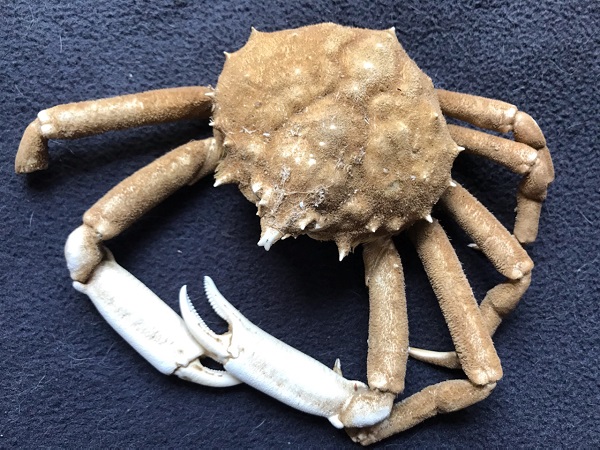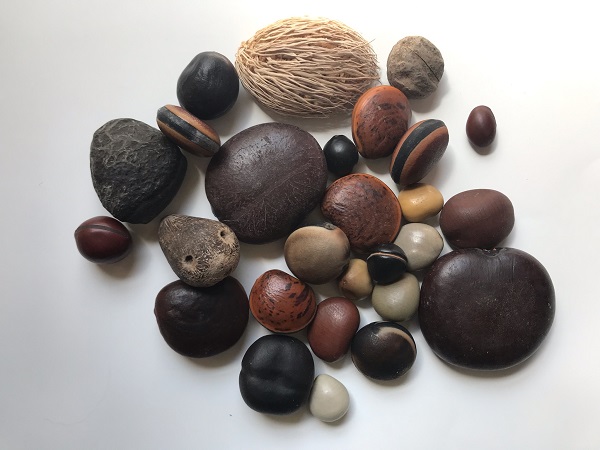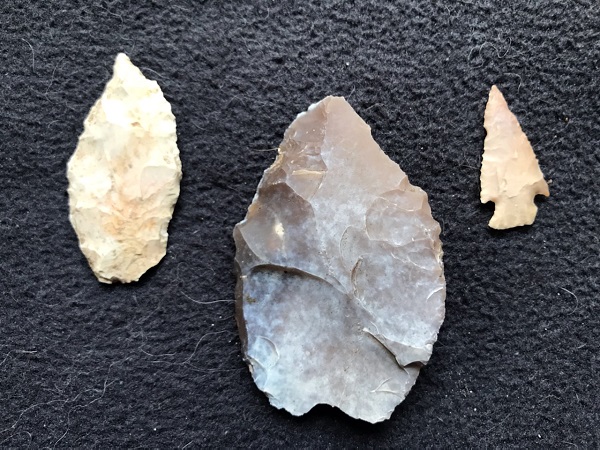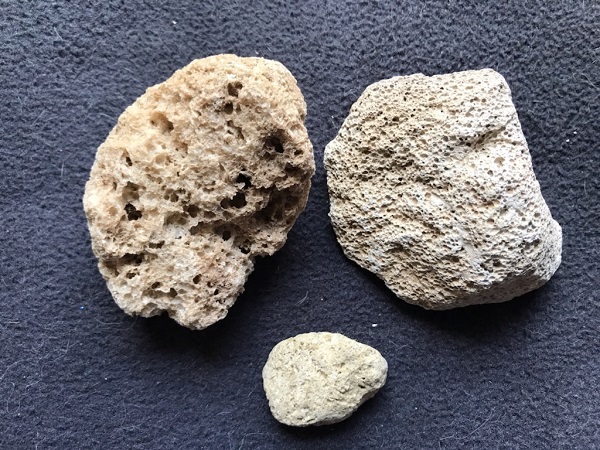As the Associate Curator of Malacology at the Houston Museum of Natural Science, Tina Petway is our resident queen of the seas. At 75 years young, the native Texan has spent her whole life walking along the nearly 3,400 miles of the Texas Gulf Coast shoreline. “Mother Nature has been remodeling our coastline for thousands of years,” Petway said. “Everything along the Texas Gulf Coast is interconnected and prone to Mother Nature’s whims.”
That interconnectivity means things wash ashore from thousands of miles away, a testament to the power of tides and weather. Here, Petway shares what we might find while exploring Texas’ miles of beachfront, from the Golden Triangle near the Louisiana border to South Padre Island.
Crab Shells

Alongside standard seashells, beachgoers will find the fragmented armor of crustaceans, like crab shells tops and even the occasional claw. Blue crabs and spider crabs are the most common. “There are other species of crabs to be found, like sand crabs, and those shells are brown and pretty, and they don’t get too big,” Petway says. “They can be painful if stepped on, of course.”
She’s got plenty of darling specimens, including those sand crab shells, on display in the George W. Strake Hall of Malacology, recently revamped in 2019.
Sea Beans

We’re not talking about the green stalks you find in your salads these days. Also called drift seeds, these pods come from tropical plants near the Caribbean or along inland rivers and are carried to the Texas coast in the currents, eventually finding their way into our sandals. “These seeds drop into the water and begin a journey through the ocean, where they will wash up among seaweed clumps,” Petway says.
To the beachcomber’s eye, they might appear like rocks, some even heart-shaped, which collectors are rather keen on. Just please don’t try to eat them, she adds. They’re not edible for people.
Seaweed
“Everybody hates seaweed,” Petway laughs. “But we need seaweed.” Those slimy green leaves give our dunes structure and provide nutrients for plant life. The most prevalent form of seaweed found around the Texas Gulf Coast, sargassum grows along the islands off the Caribbean and floats atop the ocean in huge mats. “So many lifeforms live off the sargassum, like shrimp and crabs,” Petway says, “and it provides nutrients and even shelter for that marine life.”
But be careful if you walk on top of seaweed as glass and other potentially hazardous things can lurk inside due to pollution. And if you see some on the beach, throw it “into the dunes” where it can keep doing good instead of taking it to the garbage, adds Petway.
Indigenous Artifacts

In some areas, it’s possible to find manmade artifacts washing up on the shores from past civilizations that created homesteads near Texas’ resource-rich habitats thousands of years ago. “A friend found a spearpoint off the coast while walking along the beach in Sargent,” Petway says.
You can always call Texas Parks and Wildlife if you find items like these, but the habitations were so far offshore they might be underwater by now. Take, for instance, the present-day Galveston Island coast used to be one mile further out than it is today, partly due to nature’s brute force. “We can’t comprehend the ocean’s power,” adds Petway. “It can’t be contained. It will reclaim what it wants to reclaim.”
Lava Rock

The Texas Gulf Coast is strewn with lava rock from past volcanoes in the Caribbean. Like sea beans, these rocks make the long, improbable journey amid the ocean tides, after which Petway and her colleagues come across them on their travels. “I have bunches of lava rock that I’ve found over the years,” she says. “It’s usually a light gray color and full of tiny holes and bubbles. It’s essentially pumice, and it always varies in color.”
Pearls
“Many people come to the museum to show me rare pearls they found on the beach,” Petway says. “Almost any gastropod can form a pearl, but these pearls are seldom spherical and not white in color. They are also not rare or valuable.”
Sometimes what someone believes to be a pearl is actually a piece of toy whistle or a plastic widget— a common occurrence since many throw everything from sandals to foodstuffs into the surf, Petway adds. “It’s great to be curious, but use common sense. While you might find a small pearl in an oyster, that doesn’t mean you’ve hit the lotto.”
Just as importantly, take your trash with you when you leave. Rubber, leather, and plastic “can stand the test of time,” while bits of leftover food will attract predators and other hungry sea critters. “Many people see the ocean as a compost pile, and that’s just not the case,” she says. “Things don’t break down.”
Want to learn more about the importance of keeping our bay clean? Check out this week’s Beyond Bones podcast with special guest Bob Stokes, president of the Galveston Bay Foundation.
Read our previous Beyond Bones entry authored by Tina Petway here.






